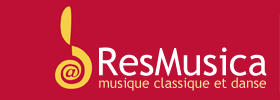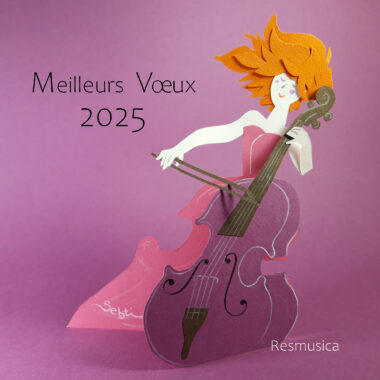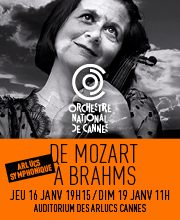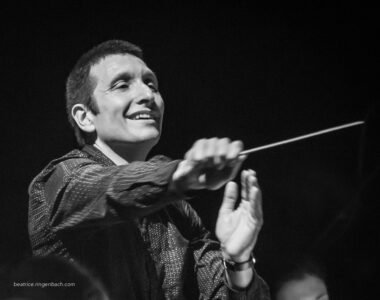Plus de détails
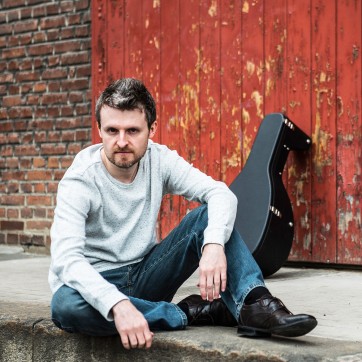 Having spent the last 18 years on the activities of the La Morra ensemble, the Polish lutenist Michał Gondko is becoming a sought-after soloist. Particularly seduced by the polyphonic art music of the Middle Ages and Renaissance, he is one of the most fascinating performers of this repertoire of his generation. ResMusica met him to talk about his career, his inspirations, his projects, his dreams and even his lutes.
Having spent the last 18 years on the activities of the La Morra ensemble, the Polish lutenist Michał Gondko is becoming a sought-after soloist. Particularly seduced by the polyphonic art music of the Middle Ages and Renaissance, he is one of the most fascinating performers of this repertoire of his generation. ResMusica met him to talk about his career, his inspirations, his projects, his dreams and even his lutes.
« Sometime in 1995-96 I managed to acquire my first lute built according to historical principles, and suddenly it became clear that it was much more “my” instrument than classical guitar. »
ResMusica: Since when have you been interested in early music and what inspired you to go deeper into it?
Michał Gondko: More or less since the mid-1990s. Back then, I was studying classical guitar at the F. Chopin Academy (presently: University) of Music in Warsaw, and was lucky to have Marcin Zalewski – one of the very few professional lutenists in the country who used 16th-century playing techniques – as my professor. At this point I had had years of classical guitar training, so I was familiar with the music of John Dowland and Johann Sebastian Bach; and I was listening to a lot of early music. I will never forget how impressed I was after hearing Bach played on the lute by Hopkinson Smith, on the radio – despite the crackling reception of an old mono receiver. When this recording hit the local store, I spent most of my savings on it, and then couldn't listen to it for a long time because I didn't have a CD player. I did the same with his recordings of the works of the 17th-century French lutenists. In the 1990s, Polish Radio was already broadcasting a lot of early music and I was absorbing everything from medieval chant and polyphony to 19th-century chamber music played on period instruments. I also heard Emma Kirkby, The Consort of Musicke, Sequentia, Gothic Voices and many others, in concert. This occasionally meant traveling to remote parts of the country, but it was well worth the effort. Without much hesitation I cut my guitarist's right-hand fingernails, and Marcin Zalewski introduced me to lute technique. Before long, however, the school authorities made it clear to me that I needed to decide what I wanted to be, so I resolved to try my luck at the Schola Cantorum Basiliensis, since Hopkinson Smith, with whom I was in contact, encouraged me to sit the entrance exam. I passed it successfully and there was no going back – but also no wish to go back, despite always having had a soft spot for the guitar.
RM: What shape did your studies with Hopkinson Smith take? Were they different from your lute training back in Poland?
MG: As far as solo playing is concerned, they significantly expanded of my horizons, in musical as well as technical terms. As a musician, Hoppy raises the bar high – for himself and his students alike. For each piece we looked for something that he himself fittingly described as “a perfect union of physical gesture with musical gesture”; and I can add that he also insisted on a well-shaped, “singing” phrase as well as clarity of polyphony in the context of full understanding of the structure and design of a composition. It was intense work and I learned a lot – not only about music but also about being a musician. At some point, however, I felt somehow breathless, so I reconfigured my studies in order to focus on Late Medieval and Early Renaissance music.
RM: Does that mean you stopped playing solo at that time?
MG: No, but the workload related to the dynamically evolving ensemble activity left little time for solo playing. While the CD Von edler Art (Ramée/Outhere, 2008, with Corina Marti) contains a lot of solo material, and while there are solo tracks on La Morra CDs, the proportions began to improve only after 2010.
RM: What role did Schola Cantorum Basiliensis play in your career? Was it in your SCB student days that the idea of founding the ensemble La Morra took shape?
MG: Yes. The initial impulse came from me, but its original context was through intensive work with fellow students, especially with Corina Marti. In fact, many other early music ensembles with roots in Basel have started – and still start – in a similar way (one of the best known, Sequentia, has recently been celebrating its 40th anniversary). It was the financial and organisational support from the SCB that allowed our first CD (Le Jardin de Plaisance, Raumklang, 2003) to materialise, which in fact kick-started the ensemble's international career. The Schola was also involved in the production of our latest CD, Petrus Wilhelmi de Grudencz (Glossa, 2016). So I can say that, initially, SCB played a key role in my career.
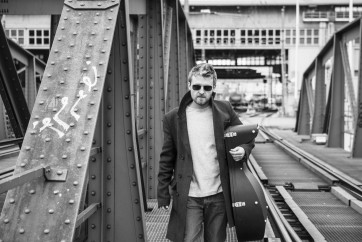
RM: Please tell us more about your latest CD project. Why did you choose this repertoire?
MG: The Latin poet and composer, who signed his compositions with an acrostic Petrus (and once with his full name: Petrus Wilhelmi de Grudencz), was only identified some 40 years ago. Several CDs have already been devoted to his output. For us, his oeuvre became the starting point for a portrait of musical culture that was cultivated in Central Europe at the time, when Du Fay and Binchois were writing their most important works in the south and the west. This musical culture is rather conservative, and is considered peripheral by some, but it is not unattractive and it would be a pity if knowledge of it remained limited to academic circles. Browsing through the sources and musicological publications we have come across some completely unknown pieces, which the wider public will only get to know from our CD. By perceiving the music of the past centuries only through the prism of breakthrough achievements by a “winning team” of composers, one can overlook plenty of valuable music which history has treated less kindly. It is sometimes worth asking : « what was going on elsewhere at a given time, far from the leading artistic trends ? » Searching for answers is laborious – it requires knowledge of music history, of the current research in a particular field of study, and a thorough familiarity with the sources – but it can produce surprising results.
RM: How does one conduct source research in the 21st century? Do you travel from one library to another, or do you work at home from the computer?
MG: The internet has simplified this task enormously. More and more libraries digitise their collections, making them available online. In addition, in Basel we have three excellent libraries which, for decades, have been collecting scholarly literature, research tools and facsimiles of early music sources. So I can do the great majority of this work without leaving the city and sometimes without even leaving home. In difficult cases I seek the help of colleagues within musicology. Trips to libraries with the purpose of visiting the source are very rare. The last time it happened was when we were preparing the recording of Johannes Ciconia's complete secular works (Ricercar, 2011). We traveled to the University Library in Padua in order to consult the ballata Ligiadra donna in a version which survived without music in a little-known early 15th-century manuscript of poetry. We have subsequently set this version of the text, which slightly differs from those transmitted in the musical sources, under Ciconia's music. They matched perfectly, and the declamation became clearer in performance.
« It is sometimes worth asking : « what was going on elsewhere at a given time, far from the leading artistic trends ? »
RM: What place does Polish music occupy in your work?
MG: It is difficult to answer this question briefly. With La Morra, I primarily focus on the polyphonic art music of the late Middle Ages and early Renaissance; as a soloist, I am mainly interested in the repertoire for Renaissance lute. It is easy to think of music by, say, Machaut or Landini as “French” and “Italian”, respectively, but consider Wilhelmi: he was apparently from a German-speaking family; he obtained a university degree in Jagiellonian Cracow; his works can be found almost all over Central Europe (where he traveled a lot), but mostly in Czech sources, where they featured until the mid-17th century in repertoire of the literati (devotional fraternities of the educated citizens). Does this makes his music German, Polish, or Czech, or perhaps a bit of all? By means of comparison, the stylistic roots of the works of Nicolaus de Radom are clearly Italian and French, so, in the interest of historical precision, I prefer to use the term “Central European music” in relation to the works of Wilhelmi, Radomski and their contemporaries in the same cultural circle. This repertoire has always been an object of particular interest to us. As far as my solo repertoire is concerned, the larger part part is indeed Renaissance lute music with Polish connections. The album Polonica (Ramée/Outhere, 2015) is dedicated to it.
RM: Is the realisation of the “Polonica” project related to the fact that lute music was popular in Polish Renaissance?
MG: Yes, and also because this repertoire is almost unknown today. But looking into the anthologies of lute music from around 1600, it becomes clear, that the repertoire explored in Polonica belonged to the canon of the European lute repertoire.
RM: How was the situation of lute music in French Renaissance?
MG: By the 16th century the lute was firmly rooted in the main European cultural centres, including France. Towards the end of the century there was a move away from the strict polyphony in favour of abstract forms and new, lighter dance forms (i.e. the courante). In search for new sound qualities the design of the instrument became larger, more courses were added (a “course” is a pair of strings) and there were experiments with the tuning. All these innovations led, on the one hand, to the birth of a new style, and on the other, to the emergence of a new standard instrument – the French Baroque lute, with its D minor tuning. Interestingly, a Polish lutenist to Henry III and Henry IV, Jacob Reys, called “Le Polonois”, seems to have played a role in the early phase of this process. Much of his surviving music already reflects this avant-garde style, which at the time of his death in 1605 was already spreading further afield. Jacob, then, appears to have been one of its earliest exponents. “Le Polonois” was laid to rest right next to the Louvre, in the church Saint-Germain-L'Auxerrois, which is the final resting place of many artists and dignitaries with connections to the court.
« The full range of repertoire, from medieval to early classical, requires a dozen or so instruments ! »
RM: You mention the evolution of the construction and the sound of the lute. Does this mean that present-day lutenists should own several instruments, each suitable for the music of a given period?
MG: In fact, the full range of repertoire, from medieval to early classical, requires a dozen or so instruments ! Responding to changes in musical style, the lute has undergone a series of transformations over the centuries, the most dramatic of which took place from the late 16th to the mid-17th centuries. The lute alone has eight to ten main incarnations. Then there are its close and distant relatives, and of course the various forms of the guitar. Such a multitude of instruments and the necessity to maintain a high level of playing on each of them both require a lot of work and financial resources, so you have to make choices and set your priorities. Most lutenists invest in instruments needed for the realisation of basso continuo and one or two instruments for solo repertoire. My focus is on medieval and Renaissance music, so I mainly own lutes appropriate for this repertoire. They are wonderful instruments on which to perform: they make the work easier, reward the effort and inspire. I often take them all out of their cases to enjoy them and it's hard for me to put them back. I almost went bankrupt because of them, but life is too short to play on mediocre lutes!
RM: What are lutes and their strings made of? Do lutenists play on period instruments or on modern copies?
MG: Lutes were traditionally made of spruce, maple, yew and plum. These woods produce the best sound results and have always been readily available in Europe. Exotic woods or ivory were also used, but for aesthetic rather than acoustic reasons. The strings were manufactured from animal gut (usually sheep), which likewise produces the most attractive sound, but is very hygroscopic. This is a major obstacle to their use in concert nowadays, but there are, however, synthetic replacements which successfully imitate the sound of gut. Few lutes have survived the test of time unmodified. The farther back we go in time, the fewer are the surviving instruments, and the greater the need for reconstruction based on iconographic sources and the principles of geometry. Most lutenists play on recently constructed instruments, not so much “copies”, but instruments based on the best historical models in existence. Occasionally, however, someone is fortunate enough to own a historical instrument restored to playable condition. An encounter with such a lute is always a unique experience.
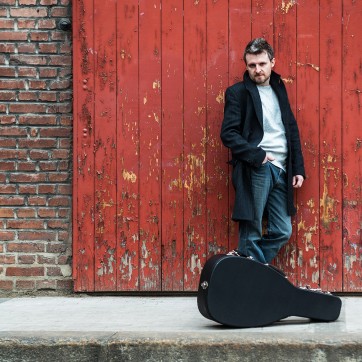 RM: And on what instruments do you play?
RM: And on what instruments do you play?
MG: For many years I have been playing almost exclusively on instruments by British makers, or makers educated in the British tradition. In my opinion, their work represents the pinnacle of modern lute making. Most recently I've used instruments by Paul Thomson, Michael Lowe, Stephen Murphy and David van Edwards.
RM: In the future, do you plan to concentrate on your solo career rather than on La Morra ensemble? Do you have other recording projects in mind, and if so, what repertoire would you like to record?
MG: I'm not giving up the ensemble work, but I would like to “get out of the box”. I am, after all, a lutenist, and the lute and its repertoire are too interesting and broad to lock oneself in a cage – for whatever reason. When it comes to music, I'm mostly a lone wolf, it's just in my blood. Pre-baroque polyphony will surely remain at the centre of my attention, but some day I hope to be able to realise some projects that require certain later instruments. This is one of the beauties of working on the early repertoires: there will always be something with which to occupy oneself. Currently I am browsing through the solo repertoire of anthologies that originated in the cultural centres in the Baltic Sea area – Danzig, Königsberg, Rostock and others. This could be a great material for a CD. Besides, a CD devoted to Francesco Landini is awaiting editing. It was recorded several years ago by La Morra in a very “chamber” constellation: Vivabiancaluna Biffi, Corina Marti and myself.
RM: To conclude, please tell us what your dreams are. The musical ones, that is.
MG: There are musicians I would like to meet in person before it's too late, in order to thank them for being an inspiration throughout the years. But my most important dream – to live my life as a musician – is one that I have managed to fulfil for the last three decades!
Pictures : © Dirk Letsch
